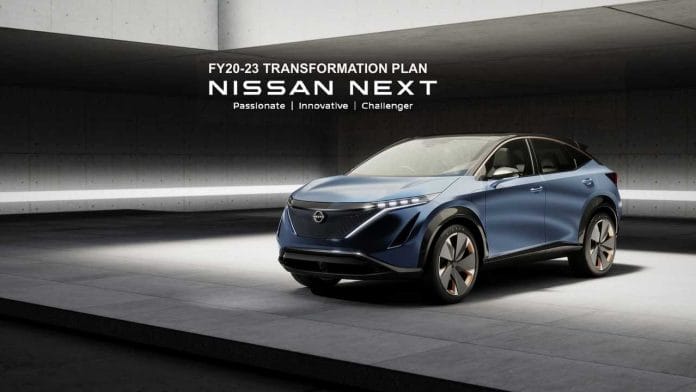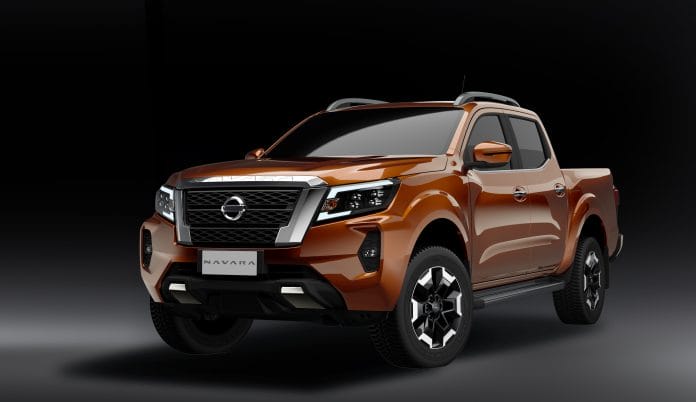The 90s was a turbulent time for Nissan. While we were enjoying the Sentra, Cefiro, Terrano, and the aptly named van called the Vanette, the Japanese carmaker was facing a period of unrest on the bigger stage.
They were struggling to turn a profit for eight years. In the US, it looked like they were giving away $1,000 for every car they sold. Sales in Japan continue to dip even as the overall deterioration of the market there seemed to slow down. They might’ve built some really good performance cars during this time that are still revered today but sadly, these cars couldn’t pay the bills.
Rennaisance
Nissan was given a lifeboat in 1999. They agreed to form an alliance with Renault that paid $5.4 billion, giving the French a 36.8% stake at Nissan. Included in the deal was the appointment of Carlos Ghosn as Chief Operating Officer. Nicknamed “Le cost killer,” Ghosn is known for downsizing as part of his restructuring in order to turn his companies back into profitability.
The Nissan Revival Plan (NRP) was announced in October of 1999 and has three main targets – return to net profitability in fiscal year 2000, a minimum net operating income to sales margin of 4.5% by fiscal year 2002, and consolidated net automotive debt reduced to less than 700-billion yen by fiscal year 2002. If not met, Nissan’s Executive Committee will resign. Part of achieving this means Nissan will cut down 21,000 jobs worldwide and the closure of five factories.
“While cost-cutting will be the most dramatic and visible part of the plan, we cannot save our way to success,” Ghosn said at the time. “The revival plan prepares for Nissan’s future.”
In Nissan’s 2001 Annual Report, they reported that the targets were met one year ahead of schedule. They were finally out of the red, made a comeback, and Carlos Ghosn was now the CEO of Nissan. Normally, things could’ve continued like this but they didn’t.
The volume game
After the impressive NRP, Ghosn and company set their sights on the immediate future and laid down the three-year plan called ‘Nissan 180’ in 2002 where they will sell 1-million additional cars worldwide by 2005, achieve 8% operating margin, and attain zero automotive debt by the end of fiscal year 2004. They missed the 1-million cars but that did not deter them from aiming for more.

The ‘Value Up’ plan in 2005 aimed to achieve 4.2m units in global sales by March 2009. Something they also didn’t meet. It was followed by the ‘Power 88’ in 2011 that aimed for 8% global operating profit margin and 8% global market share. They also focused on the US market in 2012 aiming to get a 10% overall market share.
Even if Nissan wasn’t meeting their targets, they were still moving up the ladder in terms of figures. Cars were still rolling off showrooms and into garages, and Nissan’s reports weren’t totally in the red. This was because Nissan’s cost-cutting moves allowed them to have lower pricing, so naturally they were more attractive to consumers.
Cutting too many corners?
In his article for the Harvard Business Review, Ghosn said that prior to his leadership, Nissan’s purchasing cost was 15-20% higher than Renault. They had to look for cheaper parts that in turn, gave them bigger margins. It makes sense from a business perspective, but not for the consumers.
Small things like the timing belt guides were replaced by plastic, and the panels were less premium. They were also plagued by their CVT issue that resulted in a class-action lawsuit in the US and made them extend their warranties on the affected vehicles.
Brand perception
The biggest victim of the cost-cutting was Nissan’s brand perception. Americans saw them as lower-end vehicles because of their pricing. Car experience also suffered a lot with a Consumer Reports published from 2014 saying that 14 out of 22 Nissan and Infiniti (their premium brand) cars ‘ranked last or second to last in their respective categories.’ This is crucial because unlike other surveys, Consumer Reports asks people who have owned their car for years already.
Stagnation
Another reason Nissan had problems recently was because their models tend to stale in the market. The Leaf, their first full-electric model, was launched in 2010 and was never significantly updated until 2017 – this is despite being ahead of Tesla at the time. Their entry-level sedans Versa and Sentra had their previous generations launched in 2011 and 2012 respectively but were only updated last year. Others like the Maxima and Navara are already 5 and 6 years old, while the GT-R is already grown-up at 14 years on its current platform.
Ghosn effect
Nissan was left in a fragile situation when Carlos Ghosn was booted out of the company after he was arrested in Japan in 2018. His strategy for profitability and market share also proved to be frail. In 2017, Nissan peaked at 8.4% market share in the US, sold 5.7m cars worldwide, earned almost 12-trillion yen in net sales, and 747-billion yen in net income. However, once car sales slowed down worldwide, they realized they were on thin ice.
After fiscal year 2019, Nissan’s market share in the US dwindled down to 7.2%, they sold 4.9m cars worldwide, 9.9-trillion yen in net sales, and lost 671-billion yen in net income. They also shared that they’re projecting to lose roughly the same amount for 2020 as the pandemic hit the worldwide economy.
Job cuts were also enormous, to say the least. In July 2019, they announced the plan to cut down 12,500 jobs and reduce production by 10% by 2022. Then in April 2020, they slashed another 10,000 workers in the US due to the pandemic. A month later, 20,000 people were let go mainly in Europe and developing countries.
NEXT Plan
Learning from the mistakes of the past, Nissan’s new four-year plan moves away from its volume-chasing under Ghosn. With new CEO Makoto Uchida at the helm, Nissan is looking into further streamlining operations and achieving financial stability and profitability.

“Our transformation plan aims to ensure steady growth instead of excessive sales expansion. We will now concentrate on our core competencies and enhancing the quality of our business, while maintaining financial discipline and focusing on net revenue per unit to achieve profitability. This coincides with the restoration of a culture defined by “Nissan-ness” for a new era.”
Under the four-year NEXT plan, Nissan downsize production capacity to 20%, reduce number of models by 20%, reallocate sources to globally competitive models and markets, and shorten product life cycle to below 4 years.
Resurgence
To make people not talk about your past, make them talk about something else. In the car industry, that means churning out new cars and Nissan knows that.
Earlier in July, Nissan finally unveiled the Ariya, a full-electric crossover. It was followed by the Nissan Magnite in India, then the Z prototype that’s a modern take on the iconic Fairlady Z. Their return to form in the US market will be led by the all-new Nissan Rogue, while Japan will have a new Note.

For the Philippines, there’s a new Terra and Navara, though both are still to be launched locally, and it seems like we’ll be having the Nissan Kicks to replace the Juke sometime very soon.
There are still dark clouds hovering over Nissan because of the past but with these series of moves, it looks like sunshine is finally breaking through.

